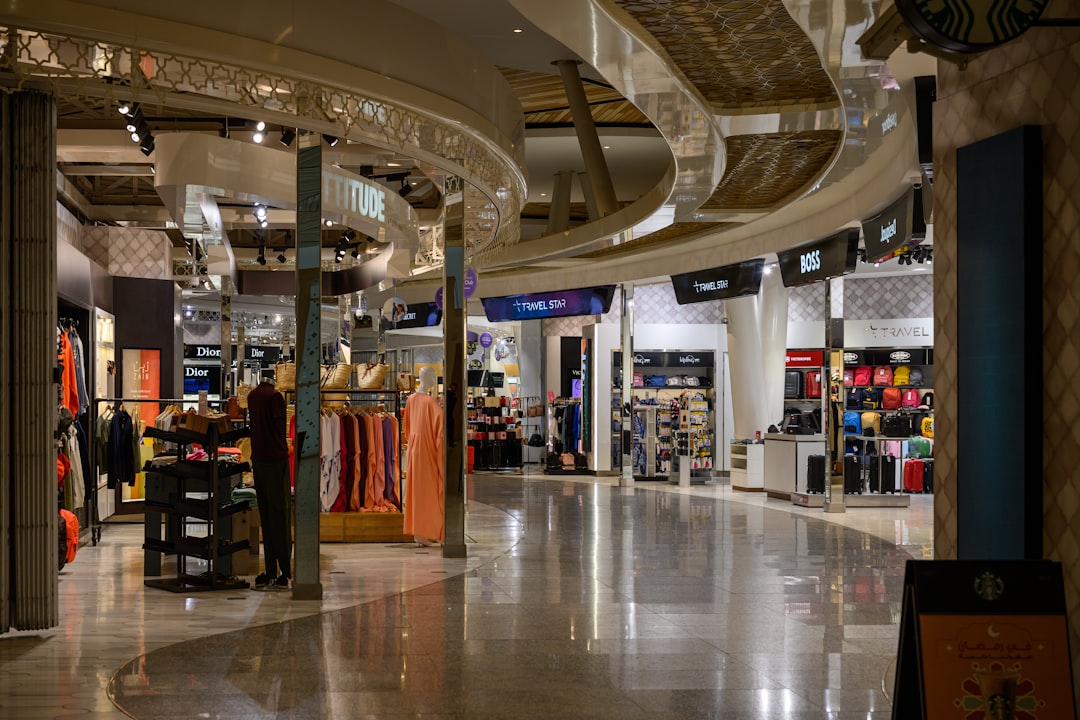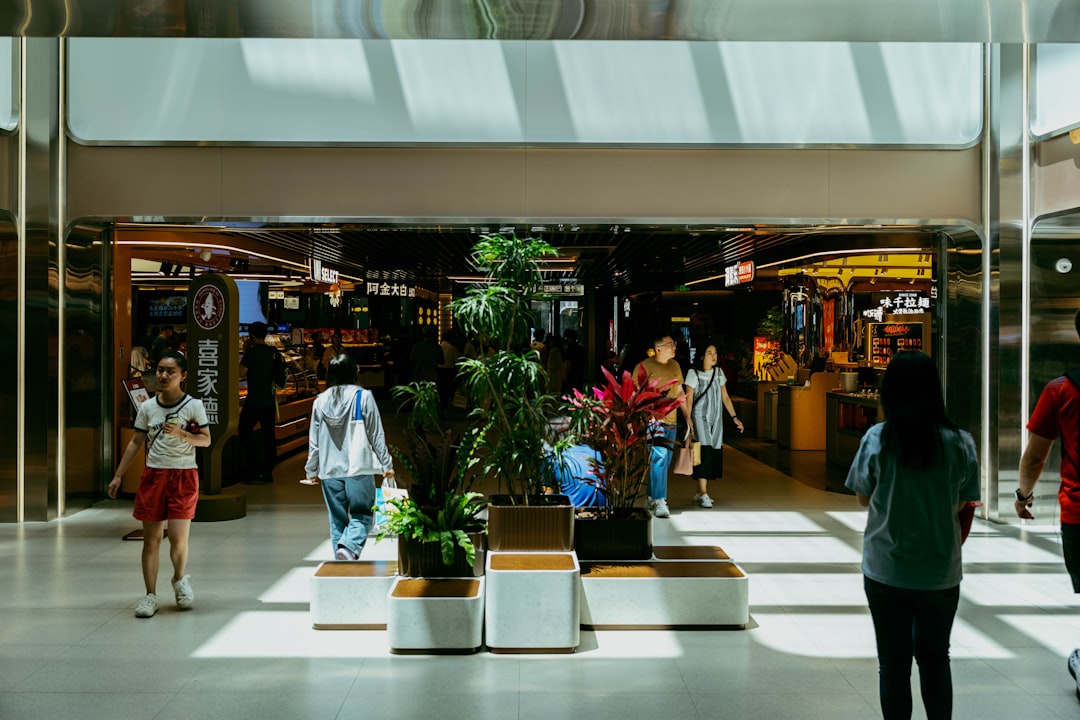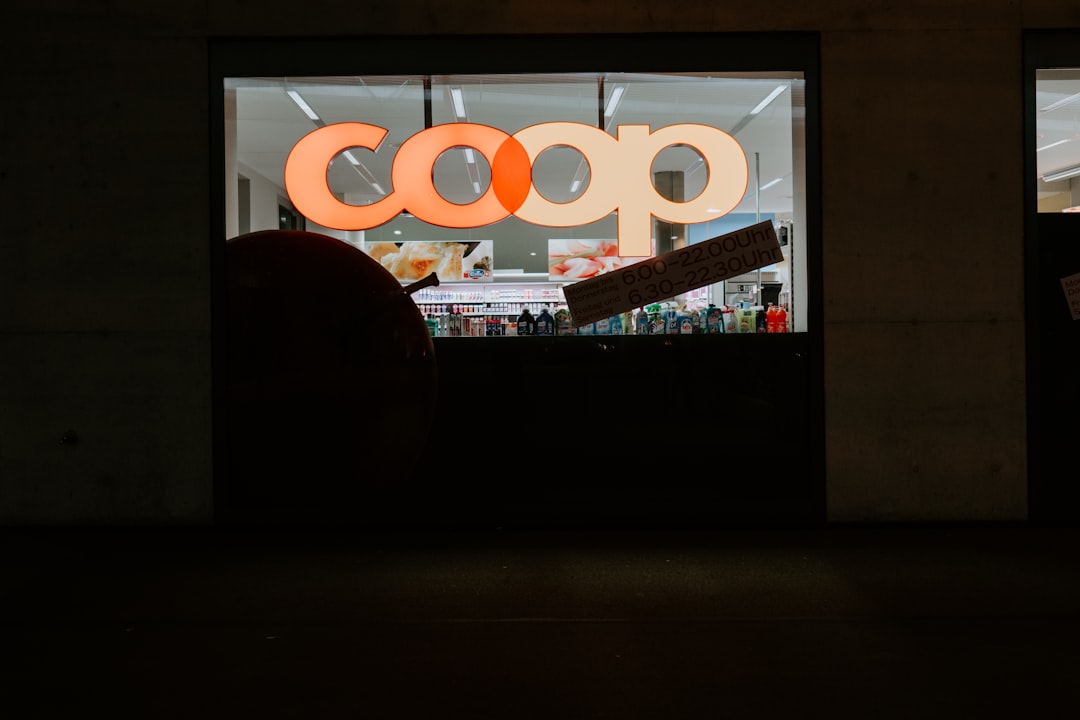

Engage prospects with a scan and streamline customer engagement with FREE QR code marketing tools by Sona – no strings attached!
Create a Free QR CodeFree consultation

No commitment

Engage prospects with a scan and streamline customer engagement with FREE QR code marketing tools by Sona – no strings attached!
Create a Free QR CodeFree consultation

No commitment
Retail stores are rapidly transforming their customer engagement strategies, driven by the rise of digital touchpoints in physical environments. Today’s consumers expect seamless connections between offline shopping experiences and online information, deals, or interactions. QR code technology in retail has emerged as a vital link, offering a frictionless way to enhance the customer journey and boost measurable engagement without requiring apps or complex integrations.
One persistent industry challenge is the inability to tie in-store behaviors with digital intent, causing retailers to miss out on high-value prospects who never interact beyond browsing or fail to leave their contact information. The implementation of QR codes provides a dynamic, data-driven approach to these issues, enabling instant access to product details, personalized offers, and interactive content right on the sales floor. This technology empowers retailers to modernize traditional print materials while capturing rich engagement signals, ensuring each interaction is both valuable and trackable.
By leveraging QR code applications, retail stores can increase store traffic, improve conversion rates, and gather critical insights into customer behavior, even when customers remain anonymous in the moment. This holistic view allows retailers to reduce the risk of lost opportunities, optimize the customer journey, and create a unified omnichannel brand experience. This guide explores how QR codes can be strategically utilized to deliver these outcomes, supporting both immediate wins and long-term growth. For additional context on how QR tech elevates the in-store shopper experience, see this industry overview.

QR codes bridge the gap between physical touchpoints and digital engagement, making it simpler to convert interest into action in retail settings. When a shopper pauses at an endcap, lingers over a premium product, or asks a quick question at checkout, a well-placed QR code can turn that moment into a measurable interaction. For busy customers, scanning is faster than typing, and for retail teams, each scan is a signal that can be used to personalize follow-up and improve the store experience.
Many retailers struggle with missed opportunities when potential customers browse in-store but do not register or interact digitally, leading to gaps in CRM data and hampered remarketing efforts. QR codes replace passive assets with interactive, trackable gateways. With the right planning, they become the connective tissue that moves a visitor from curiosity to conversion, all while capturing valuable first-party data.
Modern QR platforms such as Sona QR automate these steps by generating unique codes for every campaign, auto-tagging audience data, and syncing insights directly to your CRM and marketing stack. Instead of a one-time interaction, every scan becomes a new audience you can nurture with relevant offers, content, and reminders that move customers through the buying journey.

Retailers face unique offline-to-online challenges, from prompting action after in-store promotions to measuring the impact of direct mail. High foot traffic does not automatically translate into data capture or ongoing engagement. Without a mechanism to connect store activity to digital follow-up, retailers miss opportunities to convert intent into revenue. QR codes provide that bridge, offering shoppers a simple, secure way to engage while offering marketers the visibility they need.
The appeal lies in speed and simplicity. Customers can scan a code with their phone camera, receive a personalized offer or product details, and continue shopping without friction. For retailers, dynamic QR codes allow promotions to be updated instantly across signage and print, eliminating reprint waste and ensuring campaigns stay relevant. Most importantly, QR scans produce measurable signals that enable smarter decisions about message, offer, placement, and timing. See the latest findings in this Bitly survey.
In practice, this means a seasonal window display can link to a new arrivals page, a direct mail postcard can lead to a personalized discount, and a product hangtag can offer a how-to guide. For each of these touchpoints, QR technology reduces friction for shoppers while improving measurement and attribution for the retailer.
To maximize effectiveness, retailers should match QR formats to specific engagement goals. Think of each format as a tool designed for a particular job. The destination you choose determines the action customers take, and the data you can collect determines how you optimize over time. In retail, formats that simplify product discovery, capture first-party data, and support post-purchase engagement tend to perform best.
Static codes have one fixed destination and are ideal for evergreen content. Dynamic codes route to a short URL that you can change without reprinting, and they support richer analytics, A/B testing, and integrations. For time-bound promotions, product launches, and multi-location deployments, dynamic codes provide flexibility and better visibility.
Dynamic QR codes are especially effective in retail because they enable campaign updates, performance tracking, and cohesive testing across locations. Centralized platforms like Sona QR provide a single cockpit to manage formats, destinations, and metadata, helping teams standardize deployment and make smarter decisions based on scan-level data.

Placement can make or break a QR campaign. The ideal locations are those where shoppers pause, compare, or wait, because these micro-moments create the space to scan without disrupting the journey. Mapping the store layout and shopper flow helps you identify high-impact placements and match each with an appropriate call to action. The goal is to meet intent with relevant next steps that feel helpful rather than intrusive.
Beyond the four walls, consider the broader path to purchase. Out-of-home ads, windows, and direct mail all create awareness and intent, but historically they have been difficult to measure. QR codes transform these media into measurable channels that feed the same data pipeline as in-store scans, giving you a unified view of engagement across touchpoints.
Strategic placements reduce the friction of traditional engagement methods and ensure every high-fit interaction is surfaced and acted on. When you layer these placements with clear CTAs and dynamic content, each scan becomes a data point that informs the next iteration.

Retailers benefit most when QR campaigns are tied to specific customer interactions that happen repeatedly in store, at home, or on the move. Think in terms of jobs to be done: discover, evaluate, buy, and return or repeat. QR codes can support each stage with clear next steps and measurable outcomes. When you connect these micro-actions to CRM records or anonymous segments, you create a flywheel of engagement that improves over time.
Start with a few high-impact use cases and instrument them for tracking. As you learn what resonates, expand to more sophisticated experiences such as AR demos or personalized offers based on scan history. The key is to keep the QR destination tightly aligned with the context and intent of the scan.
Each of these use cases triggers specific actions such as form submissions, coupon claims, or content consumption. Measure outcomes like scan-to-signup rate, coupon redemption rate, and repeat visit lift to evaluate impact and prioritize future investments.
Every QR scan is a micro-conversion that reveals something about shopper intent. By deploying multiple codes across the store and in marketing materials, you can segment audiences automatically, based on what they scanned, where, and when. Over time, these segments become powerful inputs for email, SMS, and paid media, allowing you to tailor messages to behavior rather than demographic assumptions.
The best approach pairs thoughtful tagging with automated workflows. With a platform like Sona QR, you can append metadata to each scan event, push those events into your CRM, and trigger journeys based on context. For example, a scan on a premium appliance endcap can add the shopper to a high-ticket nurture stream with reviews, tutorials, and financing options. For strategy on connecting offline scans to revenue, see Sona’s offline attribution.
In fashion retail, you might distinguish between fitting room scans versus window display scans to control offer intensity. In electronics, you could segment by product family to prioritize service plans or accessories. The more granular your tags, the more tailored and effective your retargeting becomes.
A fragmented marketing mix leads to inconsistent experiences and missed attribution. QR codes act as connectors across print, store environments, and digital channels, transforming passive impressions into interactive journeys. When you instrument every surface with a scannable path, your offline media feeds digital measurement, and your digital channels reflect real in-store behavior.
The key is to maintain message consistency and ensure each code routes to content that matches the creative and context. A window that says New Arrivals should lead to a live collection page, not a homepage. A printed catalog page for kitchenware should connect to a category with stock visibility for the closest store. With centralized management through Sona QR, you can keep these connections fresh and aligned across campaigns and locations.
Viewed holistically, QR codes serve as the offline onramp to your digital marketing engine. They also unlock measurement across channels that were once opaque. With Sona QR, you can manage codes at scale, monitor performance by placement, and sync scan events to your CRM and ad platforms for coordinated follow-up.
Executing a high-impact QR campaign requires clarity of purpose, thoughtful design, and disciplined measurement. The following checklist maps the journey from idea to optimization so that every scan contributes to a clear business outcome. Start small, deploy where intent is strongest, and build on what works to expand across departments and locations.
Before you begin, audit your current analog touchpoints and identify the most expensive or friction-heavy moments in the customer journey. Replace those first with QR-enabled experiences. This approach produces quick wins, creates internal momentum, and yields data you can use to refine the next wave of deployments.
Clarify what you want the customer to do and why that action matters to the business. For example, a specialty grocer might target recipe downloads to increase basket size, while an apparel retailer might focus on loyalty signups at checkout to increase repeat visits. The more specific the use case library, the easier it is to select the right format, design the right CTA, and measure success.
Document the expected outcomes, the KPI you will track, and the destination experience that best supports the action. Map any follow-up flows such as an automated email, a coupon delivery, or an associate outreach. This ensures that scans translate into meaningful next steps rather than dead ends.
Select static codes for permanent, evergreen destinations such as a store hours page or a product care PDF. Choose dynamic codes for campaigns that require tracking, retargeting, or frequent updates. Dynamic codes let you A/B test landing pages, rotate offers, and change destinations without reprinting.
If you plan to route by device, location, or time of day, confirm your platform supports those rules. With Sona QR, you can manage destination logic, add UTM parameters automatically, and standardize naming and tagging conventions so downstream analytics stay clean.
Make the code conspicuous and enticing. Frame it with brand colors, add a short headline that promises value, and include clear action language such as Scan for 15 percent off or Scan to see your size. Avoid placing codes on reflective or curved surfaces without additional testing, and ensure there is enough white space to maintain scannability.
Test across devices, angles, distances, and lighting conditions. Ensure the landing page loads quickly, adheres to mobile usability standards, and reflects the promise in the CTA. If you are using multiple creative variations, test both the code placement and the message to learn what combination drives the highest scan rates and downstream conversions.
Roll out your codes in the locations where intent is highest. In-store, prioritize endcaps, fitting rooms, service counters, and checkout areas. Outside the store, leverage windows, billboards near high-traffic corridors, and direct mail to nearby neighborhoods. Match the placement to the action: a fitting room code that checks size availability is more useful than a generic promo.
Coordinate with store associates to ensure they know what each code does and can offer prompts or explanations. Provide simple talking points and incentives where appropriate. Consistent, informed staff engagement can significantly lift scan rates and conversions.
Monitor scan volume, conversion rates, and revenue outcomes by code, location, and creative. Identify drop-off points and run experiments with the CTA, incentive, and destination. Use benchmarks such as scan-through rate and scan-to-action rate to diagnose whether the issue lies with visibility, message, or the landing experience.
Feed performance data into your broader marketing analytics. With Sona QR, you can view scans by time, device, and campaign, then sync to your CRM and attribution tools on Sona.com. This closes the loop from scan to revenue and helps you prioritize future investments based on proven return.
Robust QR management platforms streamline this checklist by handling code generation, error correction, and ongoing optimization. As your program scales, look for features such as bulk creation, template libraries, role-based access, and automated tagging. These capabilities help teams move quickly while maintaining consistency and data integrity.
Real value from QR codes comes from turning granular scan data into outcome-oriented insights. Many stores count scans but stop short of connecting them to sales, retention, or lifetime value. The remedy is to treat QR codes as the start of a measurable journey, not a one-off interaction. Instrumenting each step lets you see which messages, placements, and offers contribute to pipeline and closed revenue.
A sound analytics plan tracks both leading and lagging indicators. Leading indicators include scan volume, scan-through rate by placement, and landing page engagement. Lagging indicators include coupon redemption, loyalty enrollment, app installs, and revenue attribution. Together, these metrics illuminate what is working, why, and where to optimize next.
By closing these data gaps, retailers align their strategies with what drives revenue, not just engagement. Over time, the data set from QR activity becomes a strategic asset that informs merchandising, staffing, creative, and media planning.
Scaling success starts with a handful of best practices that increase scan rates, improve measurement fidelity, and accelerate follow-up. Focus on clarity in your CTAs, consistency in your tagging, and creativity in your placements. When shoppers know exactly what they will get and why it matters, they scan more and convert faster.
Beyond execution, remember that staff education multiplies impact. Associates can coax valuable scans at key moments such as checkout or fitting rooms. A simple reminder like Scan here to see if we have your size or Scan for a free sample with your purchase can shift behavior meaningfully.
Start creating QR codes for free. Setup takes minutes, and you will have a clear view of scans by time, device, and placement, with native integrations to the tools you already use.

Retail leaders consistently report that QR codes produce measurable lifts when deployed with intention and supported by staff. The most successful programs tie codes to clear value exchanges: save money, save time, or gain access. Studies across categories suggest that scan-to-action conversion improves when the destination content is mobile-first, immediate, and relevant to the in-store moment. For a practical overview of tactics and benefits, see Shopify’s take on retail QR codes.
Comparative insights also reveal category-specific best practices. Specialty retailers lean into content depth and service, while big-box retailers emphasize speed and scale. Both approaches can succeed if grounded in customer intent and measured rigorously.
Post-pandemic, shoppers have maintained a preference for contactless interactions and quick self-serve options. Retailers that combine QR-driven experiences with targeted follow-up see sustained benefits in both conversion and loyalty metrics.
The next wave of QR innovation blends immersive content, privacy-safe data practices, and predictive personalization. As retail experiences become more experiential, QR codes will function as both the entry point and the telemetry system that measures engagement with new formats like AR try-on, live shopping, and smart fixtures.
Equally important is the maturing privacy landscape. Retailers must capture consented data transparently and manage preferences responsibly. Platforms such as Sona QR and Sona.com are evolving to support granular consent, data minimization, and secure integrations that maintain trust while enabling rich analytics.
QR code technology has shifted from novelty to necessity as retailers seek to capture engagement signals and unify every physical and digital interaction. By solving persistent industry pain points such as missed high-value prospects, invisible foot traffic, and disconnected campaigns, retailers can act on every customer interaction. With dedicated tools like Sona QR for code management and Sona.com for attribution, retail teams can surface actionable insights, measure precisely, and turn offline engagement into revenue and growth. The retailers who lean in now will set the pace for a responsive, data-driven experience where every scan moves the customer relationship forward.
QR codes have transformed retail stores from simple point-of-sale locations into dynamic hubs of customer engagement and measurable growth. Whether it’s attracting new shoppers, enhancing in-store experiences, or providing personalized offers, QR codes replace static signage with instant, interactive connections that capture valuable insights on customer behavior and preferences. Imagine knowing exactly which displays or promotions drive foot traffic and sales—and being able to optimize them in real time.
With Sona QR, retail businesses can easily create dynamic, trackable QR codes that update instantly without the need for reprinting. Every scan links directly to actionable data, helping you connect offline shoppers to online engagement and increase revenue. No missed opportunities, just smarter, more profitable retail campaigns. Start for free with Sona QR today and transform every scan into a loyal customer and a measurable sale.
QR codes bridge physical touchpoints and digital engagement by providing instant access to product details, personalized offers, and interactive content, making shopping faster and more interactive without requiring apps.
QR codes increase store traffic, improve conversion rates, capture rich engagement data, reduce friction for customers, enable real-time content updates, and support measurable marketing outcomes across channels.
QR codes collect detailed scan data including location, time, and device, which can be synced with CRM systems to build audience segments, track campaign performance, and connect offline actions to revenue.
Retail packaging QR codes can link to care instructions, origin stories, sustainability information, augmented reality try-ons, and post-sale offers, helping track ongoing customer engagement beyond the purchase.
Stores can use QR codes at checkout or on receipts to prompt easy loyalty program signups, deliver exclusive offers, and enable automated follow-ups that nurture repeat visits and increase customer retention.
Use Sona QR's trackable codes to improve customer acquisition and engagement today.
Create Your FREE Trackable QR Code in SecondsJoin results-focused teams combining Sona Platform automation with advanced Google Ads strategies to scale lead generation

Connect your existing CRM

Free Account Enrichment

No setup fees
No commitment required

Free consultation

Get a custom Google Ads roadmap for your business






Launch campaigns that generate qualified leads in 30 days or less.
